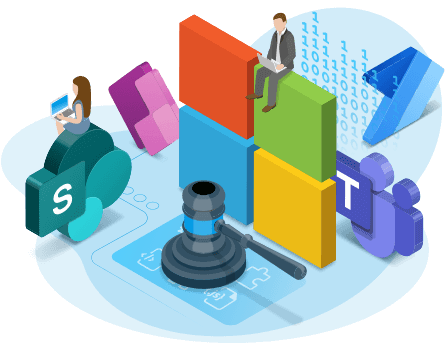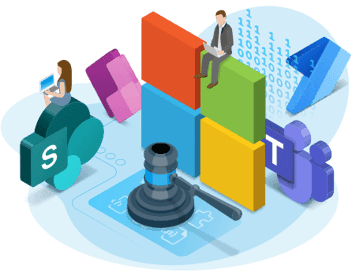 During SharePoint Saturday Paris I had the privilege to catch up with a lot of great people in the community. One person among them who is noticeably active in these types of events now is Jeff Teper – Corporate Vice President for SharePoint and OneDrive at Microsoft.
During SharePoint Saturday Paris I had the privilege to catch up with a lot of great people in the community. One person among them who is noticeably active in these types of events now is Jeff Teper – Corporate Vice President for SharePoint and OneDrive at Microsoft.
I was fortunate enough to get 15 minutes of Jeff’s time for a spontaneous and unplanned interview, where I’m asking Jeff a few questions about the recent announcements of the SharePoint Framework and also his top 3 reasons why someone would consider upgrading from their existing SharePoint on-premises environment to SharePoint 2016 on-premises.
An Interview with Jeff Teper: Key takeaways
A few highlights about the SharePoint Framework:
- SharePoint Framework starts to roll out this summer.
- It’s not replacing the existing models, it’s additive to what is there already.
- Learning threshold for developing SharePoint Framework solutions is a lot lower than for traditional SharePoint development.
- Leveraging a larger community than just traditional SharePoint developers – we can now have any web developer build solutions on top of SharePoint more easily.
- SharePoint Framework helps developers build solutions that out of the box works on mobile devices.
- The latest UX changes in SharePoint represent a first major refresh since the IE6-8 era.
- Microsoft is building their own first-party solutions on the same framework as the one that will be available to developers.
- The new SharePoint Home uses the SharePoint Framework and is a nice example of what can be achieved and how the different patterns can be applied.
- Existing sites can run new pages and existing pages can run new parts.
Listen to the interview to find out what Jeff’s Top 3 reasons for upgrading to SharePoint 2016 are
Full transcript
[Tobias] = Tobias Zimmergren
[Jeff] = Jeff Teper
@jeffteper stopping at @RENCOREAB booth @zimmergren #SPSEvents #MVPBuzz pic.twitter.com/bOQCaoTCob
— Patrick Guimonet (@patricg) May 28, 2016
[Tobias]: I’m here with Jeff Teper, Corporate Vice President of SharePoint and OneDrive. Welcome!
[Jeff]: Thank you!
[Tobias]: We’re going to talk a bit about what happened at the SharePoint Future event, May 4th, 2016 and some of your thoughts about the SharePoint Framework and the SharePoint 2016 upgrade story.
But first of all – The SharePoint Framework – It’s a new model, but not a new model, right? It’s an additive model on top of the dev story we already have and adopts to the web standards and whatever people are doing in the industry. What are your thoughts on and tips for the SharePoint Framework that you would like to share?
[Jeff]: First, I think it would be good to put it in a context of SharePoint customization all up, then drill into development.
I think of SharePoint customization in three levels. One level is end users who might do some basic branding or add parts to a page. As part of the announcements we covered this very briefly. We will have a lot more there for end users coming up during the summer, like how to do branding, the great new authoring canvas that will enable you to pull out parts on and much more. You’ll be able to do a lot without coding.
A second level is power users working with things like PowerApps and Flow to custom build.
But we also love professional developers in SharePoint and wanted to give them a better solution. So we took a look at the feedback on what people are doing on SharePoint, and what is going on in web and mobile development in general. We really thought about what problems people wanted us to solve. They certainly wanted us to help them make pages with parts from different developers really fast, and help them make it run on phones.
One big thing we’ve heard is: it’s great that people know SharePoint but how can we get more developers building solutions on SharePoint and not have to learn C# and .NET, not that it’s not a great thing to know.
[Tobias]: Yes, it is quite a steep learning curve to get into SharePoint development traditionally but that kind of eases out a bit now.
[Jeff]: Right! So we are trying to both empower people who have spent years on SharePoint and also bring new developers to the community. We think that with Office 365, many small, medium, and large organizations that never stood up their own SharePoint servers are now getting access to SharePoint.
For years, our go-to stat was that up to 80.000 organizations are using SharePoint. By the time of the recent event, this stat rose up to over 200.000 organizations, to a large part because of SharePoint Online. So a big base of customers wants to bring forth their SharePoint developers and attract new developers in order to solve problems regarding speed, mobile optimization, upgradability and so forth.
We looked around at what people were doing, and a lot of people were injecting scripts into pages in an ad-hoc way. In the general web developer community, a new framework emerges every other week: Knockout, Angular, React and the list goes on and on. We must have messed around with about 20 frameworks and asked us how to take what SharePoint is – which is basically a Page and Part model – and introduce something that is fast so it can actually run out of the browser cache or off of a CDN. How do we make it relatively simple, without a complex surface area, and use some of the latest browser technologies? The last time we did a full SharePoint refresh was somewhere in the IE 6 to IE 8 era. We couldn’t actually use the very latest browser technology because it hadn’t been deployed on enough devices yet. So we held back a bit. But there is no need for holding back now!
[Tobias]: It’s kind of the other way around, right? You can now ride the wave.
[Jeff]: Exactly. So we embraced a lot of new things and had a couple of developer events; one in Redmond and one in Brussels, where, under NDA, we had a bunch of developers come out and give us feedback before we launched.
There are going to be some new things to learn, for example, we embraced TypeScript. If you are going to be writing a fair amount of JavaScript, having something strongly typed to make the code more reliable is a good thing.
We leverage some of the open source tools, like Yeoman for project generation. This does not mean we are not supporting Visual Studio, but a lot of developers outside of the .NET community, for example, might use Sublime as an editor and Yeoman as a project generator.
[Tobias]: So it is opening the doors for a lot more people than traditional SharePoint developers. And it is not so much about what developers you embrace but more enabling anyone to actually extend what is in SharePoint and build on top of it.
[Jeff]: Yes! The thing we wanted to also convey is that it pretty much is additive – your point at the beginning. We have the existing Add-in Model for Sharepoint, which is not going away and will be supported onwards. It is the right solution for a lot of scenarios.
On the other hand, many people were building one-off page solutions with scripting. We decided to step up to that, find a solution, and bet on it ourselves. We built our own first party stuff on that framework, like the new canvas, and the new team site home page. We pushed it hard for performance and developer simplicity. The idea was to build a framework we used ourselves and give it to the community as an additional way to build UIs in SharePoint.
The other aspect is – and I think it was the thing people were most excited about at the event – we will make it really easy to bring your SharePoint site to mobile. Think about this: you have to learn JavaScript for the web, Objective C or Swift for iOS, Java for Android, C# for Windows Phone, Windows Universal for Windows 10 devices and higher. It is really complicated. So we now run this framework within the native code of the mobile app. We host HTML in JavaScript. What you will get it this blazingly fast, mobile ready experience in a mobile app, a thing you hardly can do with the response of HTML alone.
[Tobias]: This is going to work out of the box, right? If you use this new additive model, extend something on the SharePoint framework, and comply with the practices and rules it is just going to work on mobile out of the box as well.
[Jeff]: Exactly! We are picking techniques for how we design the JavaScript and HTML framework to make sure it is really fast over mobile networks. If you are hosting the page on a CDN as opposed to a server on SharePoint Online or SharePoint Server, it is going to be several 100 milliseconds faster.
If you use our best practices for how to fetch data into the page you will have to make fewer roundtrips for smaller amounts of data, and so forth. We did something pretty clever with the patterns we have done, like the new SharePoint home, that uses the SharePoint framework.
We cache the data as JSON on the server, the page itself comes off the CDN and fetches the data that has been pre-computed. We then fault in the query for the latest data and it just feels like a first-class mobile experience.
We will get those patterns out to developers as we roll out the framework guidance going into the summer.
[Tobias]: Speaking of the roll-out: is it going to start during the summer? And how long do you expect the roll-out to take until all the sites in Office 365 can use the new features and new team sites?
[Jeff]: We decided to not hold all the new stuff that we are doing until the last piece to be in place. Otherwise, we would be shipping it at the very end of the year. Instead, we are staging these things. People have already seen the new document library and the SharePoint homepage came out. Up next are the new List UI, new team site provisioning, and team site home page.
At this point, we will be using the new SharePoint framework internally in production but not exposed as a platform. We first want to really exercise it ourselves and make sure it is rock solid. A set of developers already gave us great feedback, and frankly if we had not gotten this feedback we would have all the first round users get back to us with the classics: your documentation is not good enough yet, etc. So we have been working on that and this summer, we get the framework out for developers.
Another thing that is important to stress: existing sites will be able to run new pages and existing pages will be able to run new parts. We really wanted to make this evolutionary. If someone wants to get started by writing a new web part and run it both in old and new pages we will give the guidance on how to do that.
In terms of timing, I think we are past the days of shipping a big server release. Back in the days, you had to be very date driven. You would pick a date, do the project management, and whatever is not at the quality bar at the time of release will thwart the project. You had to be date driven because you were trying to get hundreds of developers to ship simultaneously.
[Tobias]: There is a lot of expectations, right.
[Jeff]: Exactly! If you don’t pick a date you are waiting for the last one to finish up. So instead you pick a date and you move the features that were not completed in time to the next release.
In the cloud, we don’t have to couple all the developers anymore. In fact, we are deliberately trying to decouple the timings, so that people can ship whenever they are ready. The document library was ready before the framework, so we had it shipped.
When the framework is ready for third parties, we will start rolling it out to people to get feedback. We are not going to release it broadly until it is rock solid and the feedback we collect indicates that developer experience is good. As of today, we are aiming for this to happen over the course of the summer.
[Tobias]: It is a big step coming from a three-year cycle, which we developers are used to from SharePoint.
[Jeff]: The date is a little less predictable. The team is driving themselves really hard. They are very eager to get this out. But our first priority is to make sure it works under the covers for the new team sites and page experience. After that, we expose it to external developers. We will determine when the framework comes out depending on how fast we can finish step one. I am excited about it.
[Tobias]: Thanks for the input on that. Just to round things up – and I know there are a lot of other people waiting in line to get a chance talk to you – Sharepoint 2016: we had some announcement on May 4th about that as well as some previous announcements. Can you give us three reasons why someone should upgrade from SharePoint 2013 or even 2010? What would be your top three reasons for why someone should upgrade?
[Jeff]: I would say one is hybrid, the second is the hardening on the core based on the cloud experience and the third is the foundation for the future.
When talking about Hybrid, you already see all the permutations of OneDrive, Sites, Search, and DLP. And there is more to come. We are working on hybrid taxonomy, hybrid insights, and so forth. Insights, for example, will be able to take logged data from on-premises, get it in the cloud and analyze it regarding, for example, who is sharing things they should not be sharing.
For people who have large SP deployments with multiple custom sites, SharePoint 2016 gives them a way to upgrade those and more seamlessly get started in Office 365 and SharePoint Online. That is one thing.
Secondly, for customers, whether they are doing hybrid or just using SharePoint standalone on-premises, this is really the first release we have inverted the model. We used to be server first, cloud second. When we shipped Office 365 in June 2011, we built it for the cloud but shipped SharePoint Server first, then deployed it to the cloud. With SharePoint 2013, it was about at the same time. SharePoint 2016 is the first one that is cloud first. In some ways, this means a lot of features showing up in the cloud first, which is certainly true. But the real benefit for on-premises customers is, we really exercise these features. There are almost 50.000 servers running SharePoint in Office 365 and tens of millions of users. The code that went into SharePoint Server 2016 was exercised for many months, some pieces of code showed up as much as a year in advance in the cloud. So you could think of it as the biggest stress test we ever had.
And there are also some architectural things we did in terms of the topology of a farm in min-roll. We learned from the best practices of running in Office 365. So if people ask, why did you pick that topology, we can tell them that this is the farm topology that we use to support one hundred million users and more, as opposed to, say, one thousand users on a SharePoint Server on-premises.
[Tobias]: So telemetry does make sense.
[Jeff]: Absolutely, there is nothing like the real world for stress testing.
The third reason is the foundation for the future. At the SharePoint event, we announced that we will not just do another SharePoint Server release but we will do feature packs. We will take a subset of what we do in Office 365 and not wait two to three years, but start the very next year.
It was funny because some of the feedback I got at the event was: hey, you celebrated shipping a server and then you spent the next hour talking about the cloud. And I reminded them that, at the end, we committed to releasing new server functionality to on-premises customers with the shortest time difference in the history of SharePoint.
Of course, we want people to go into the cloud. Of course, SharePoint Server helps with hybrid. We think that is the best experience! But if you have to stay on premises for whatever reason you will get new functionality faster than you have ever gotten it.
Basically, the way it works is, all these new things we just announced will be shipped to the cloud in 2016. This fall, we will start to really solidify planning which pieces we can implement on-premises in 2017, including the SharePoint Framework. Of course, we want to ship it as fast as we can. But only when we really are confident it is done in the cloud, we will bake a date for shipment. Hopefully, around the Ignite event in September 2016, we will have more guidance.
[Tobias]: So that is something to look forward to.
[Jeff]: Absolutely!
[Tobias]: Thank you very much for the interview. I hope, the people listening will have a lot of use for this information. So thank you again and hope to see you soon.
[Jeff]: Thank you!
Merken


